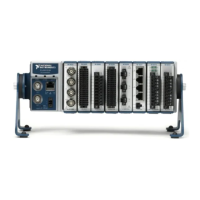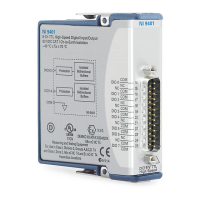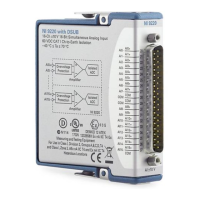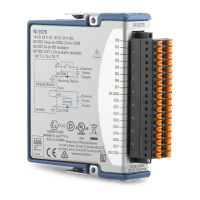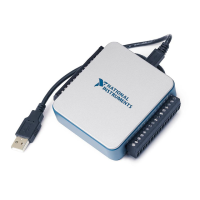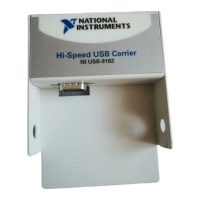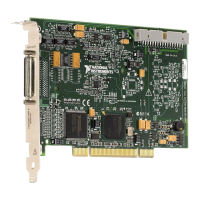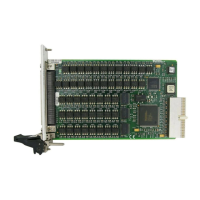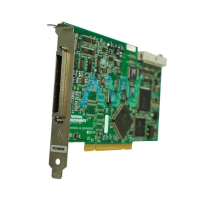Chapter 4 Analog Input
X Series User Manual 4-42 ni.com
• AI FIFO—Simultaneous MIO X Series devices can perform both
single and multiple A/D conversions of a fixed or infinite number of
samples. A large first-in-first-out (FIFO) buffer holds data during A/D
conversions to ensure that no data is lost. Simultaneous MIO X Series
devices can handle multiple A/D conversion operations with DMA or
programmed I/O.
Analog Input Terminal Configuration
Simultaneous MIO X Series devices support only differential (DIFF) input
mode. The channels on Simultaneous MIO X Series devices are true
differential inputs, meaning both positive and negative inputs can carry
signals of interest. For more information about DIFF input, refer to the
Connecting Analog Input Signals section, which contains diagrams
showing the signal paths for DIFF input mode.
Caution Exceeding the differential and common-mode input ranges distorts the input
signals. Exceeding the maximum input voltage rating can damage the device and the
computer. NI is not liable for any damage resulting from such signal connections. The
maximum input voltage ratings can be found in the specifications document for each
Simultaneous MIO X Series device.
Analog Input Range
Input range refers to the set of input voltages that an analog input channel
can digitize with the specified accuracy. The NI-PGIA amplifies or
attenuates the AI signal depending on the input range. You can individually
program the input range of each AI channel on your Simultaneous MIO
X Series device.
The input range affects the resolution of the Simultaneous MIO X Series
device for an AI channel. Resolution refers to the voltage of one ADC code.
For example, a 16-bit ADC converts analog inputs into one of 65,536
(= 2
16
) codes—that is, one of 65,536 possible digital values. These values
are spread fairly evenly across the input range. So, for an input range of
–10 V to 10 V, the voltage of each code of a 16-bit ADC is:
Simultaneous MIO X Series devices use a calibration method that requires
some codes (typically about 5% of the codes) to lie outside of the specified
range. This calibration method improves absolute accuracy, but it increases
the nominal resolution of input ranges by about 5% over what the formula
shown above would indicate.
10V 10V–()–
2
16
----------------------------------- 305 μV=
Artisan Technology Group - Quality Instrumentation ... Guaranteed | (888) 88-SOURCE | www.artisantg.com
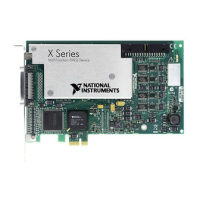
